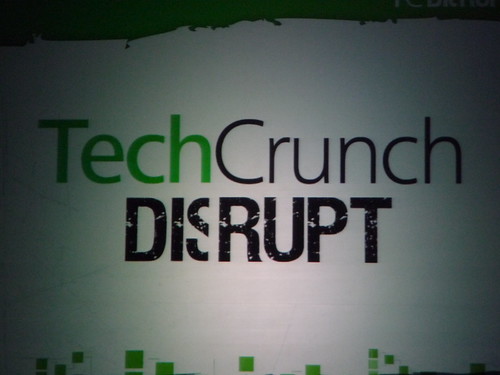I am at the DEMO Fall 2011 conference in Santa Clara, CA at the moment. It’s my first time at this conference, that takes place at exactly the same time as its competitor TechCrunch Disrupt. I visited most of the TC Disrupt conferences over the years, and I expected DEMO to be very similar. Although both events showcase start-ups that launch on stage during the event, there are quite some differences.
First of all companies have to pay USD 18,500 to present on stage for 5 minutes at DEMO. TechCrunch Disrupt is free to present, if you manage to get in of course. Both events cost money to attend, DEMO USD 1795 and TC Disrupt USD 2995 for the current event, although I met several people that got in for free (mainly VCs – disclosure: my tickets were given to my by a VC firm as well). I find USD 18,500 a lot of money to invest for a 5 minute presentation for a start-up. Maybe I am biased because I am based in China, but with that amount of money we can run UnitedStyles.com for about 5-6 weeks right now.
When you present you get a lot of press coverage of course, but looking at my Twitter stream and RSS feed the coverage of Disrupt seems better than DEMO. Maybe because TechCrunch does hardly write about the companies presenting at DEMO, but Venturebeat (that works together with DEMO) does have writers at Disrupt. Gust.com did a good job this year by presenting on stage at DEMO and getting a write up on TechCrunch at the same time by sponsoring Disrupt.
In terms of start-ups, the consumer oriented ones seem to be better off at Disrupt, but if you are perceived to be more ‘boring’ you’ll probably have a better chance at DEMO. Over the years many products from established companies have launched at DEMO. Some of these are really interesting, but you won’t see them at Disrupt.
DEMO has been around for many many years and used to be the #1 place to launch your start-up. It has a good reputation and several VCs and entrepreneurs on stage mentioned that they once launched a company at DEMO. Disrupt seems to have taken over the #1 position, at least in my perception, and at least for now – not sure what will happen after Mike Arrington announced on stage on Monday that this will be his last working week at TechCrunch after the fall out he had because of the CrunchFund.
Disrupt definitively has more action, more loud music and much better food. It’s more like a rockstar event. DEMO seems to be more of a serious conference, it is smaller and if you attend as an investor it’s easier not to miss any of the interesting companies. There are a lot more companies presenting on stage at DEMO, 80 in total during this conference. Because they all have just 5 minutes to present and there is no expert Q&A like at Disrupt, I feel you get more information more quickly. Most people in my Twitter and Facebook network seemed to be at Disrupt, not at DEMO.
Both conferences have its pros and cons, but I personally like TechCrunch Disrupt better. If I would launch a company I would certainly first try at Disrupt, paying USD 18,500 for a slot to present at DEMO just does not feel right to me for a start-up. Maybe that was okay 15-20 years ago, but times have changed. For that amount you can launch a company and a (simple) product these days.
Putting on my investor glasses I think Disrupt may have the more interesting companies on stage, but at DEMO you get to see more companies in a shorter time, which is also important. Also if you invest more in non-B2C companies DEMO may be better. One thing in which DEMO excels is the quality of the presentations. The quality at TechCrunch Disrupt is certainly high, but the ones at DEMO are even more polished and seem to be better prepared. I guess that is logical if you pay so much money for a few minutes in the spot light.
Location wise Disrupt is cool because it is located in downtown San Francisco and it has some very good parties. On the other hand, DEMO is easier to reach by car (it’s a the Hyatt Regency Silicon Valley) or when you are not staying in SF itself – and you can easily park there as well.
And lastly, if you are a coffee addict like me it’s a pretty big con if there is no coffee available throughout the day, esp. if you are still a bit jet lagged. DEMO had coffee in the morning, but they took it away after the conference started. I solved it by making several trips to the hotel lobby and get my caffeine shots there at the hotel bar, but it feels awkward to have a conference without coffee.


Webmentions
[…] Valley last year (where I was invited through Seraph Group, the angel fund that I am part of). I wrote a blog post about that one, comparing the start-up conference to TechCrunch Disrupt. What I did not know at that time was that […]